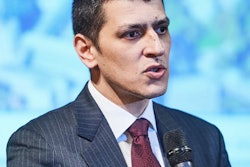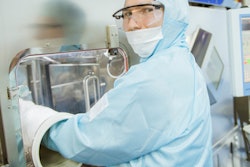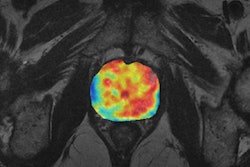
BRUSSELS - Molecular imaging will help drive personalized medicine and revolutionize healthcare, but unless the nuclear medicine sector improves its communications and outreach, it could be years before most people see the benefits, a leading molecular imaging expert told delegates at Wednesday's special event organized by the Association of Imaging Producers & Equipment Suppliers (AIPES).
Piotr Maniawski, director in charge of Clinical Science Advanced Molecular Imaging at Philips Healthcare in Cleveland, Ohio, U.S., warned that although the latest technologies were inspiring and potentially transformational, the rollout risked years of delays. "Our ability to present the benefits of molecular imaging is lacking," he said.
 We've cut radiation doses by a factor of five over 10 years, Piotr Maniawski said.
We've cut radiation doses by a factor of five over 10 years, Piotr Maniawski said.Part of the problem was due to public apprehension about nuclear power and the ingrained perceptions about radiation. "We still have to work hard to reassure policymakers," he noted. "Every time there is an incident involving nuclear power plants, like the Fukushima accident, it sets us back years. As a physicist, I can say that a little bit of radiation is good for everyone. But there is a perception problem with nuclear radiation. Our job is to find a way to get the public to weigh the scientific evidence properly."
The emergence of nuclear medicine was initially greeted with excitement, Maniawski explained. "It harnessed nuclear power from weapons development to healthcare," he said. But the reality of applying that across the healthcare sector proved a huge challenge. "The pathway to easier commercialization is critical."
Politicians are usually easier to win over than health authorities, he continued. "Politicians often make decisions on an emotional basis, while regulators usually need data before agreeing," he said, adding that many decision-makers were often turned off by the costs associated with molecular imaging.
An added complication is the ongoing economic slump, with growth in Europe and other key markets still sluggish. "We are still suffering from economic downturn, with budget cuts across many parts of the healthcare sector," he said.
Maniawski accepted that molecular imaging was costly, but argued the real question was whether these prices were worthwhile for patients, physicians, healthcare authorities, and reimbursing bodies.
 This week's symposium took place in the Solvay Library, built in 1902 by architects Constant Bosmans and Henry Van de Velde.
This week's symposium took place in the Solvay Library, built in 1902 by architects Constant Bosmans and Henry Van de Velde."It is a costly technology. But we think it is an efficient, cost-effective way of treating people. We have a very nice, noninvasive technique to see whether people are free of the disease," he said. "If we look at molecular imaging as a diagnostic test, it will always have competition from cheaper technologies. We need to see it also as a therapeutic tool. It is not a single procedure -- it is much more than that."
From a business perspective, Maniawski pointed out costs were coming down as the initial high prices of the first devices fell with improved manufacturing techniques and lower-priced competition from emerging markets like China. At the same time, the technologies themselves are improving.
"As an industry, we are improving imaging techniques. We can be much more precise with PET/CT, putting higher doses at the heart of the tumor, and less in the surrounding tissues," he said. "On average, though, in the last ten years, we have lowered radiation doses by a factor of five. We are taking big steps to make it even safer."
Editor's note: a second article from the AIPES symposium will focus on a presentation by David Lee from GE Healthcare about the cost-effectiveness of PET/CT. Look out for it next week on AuntMinnieEurope.com



















